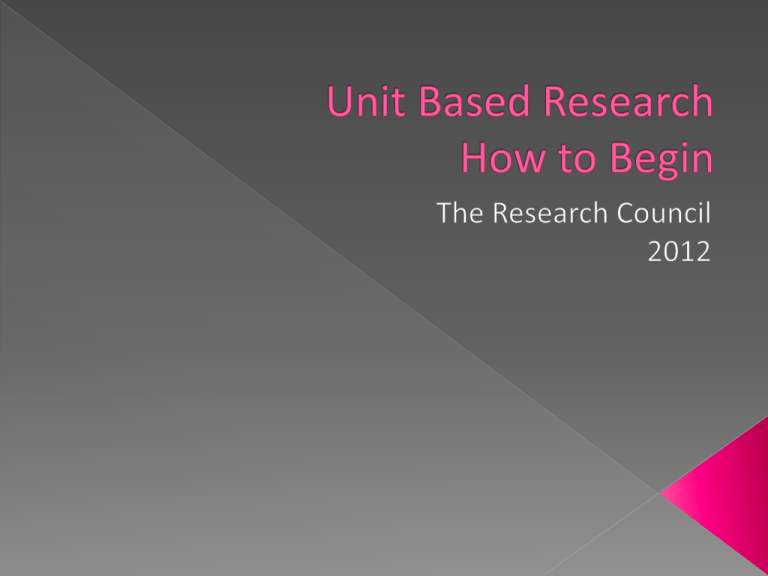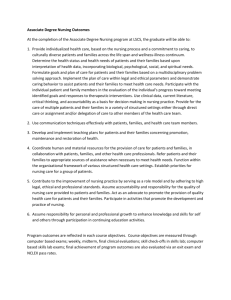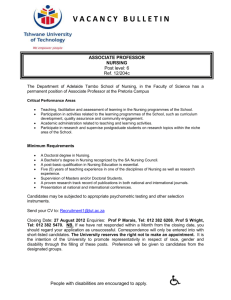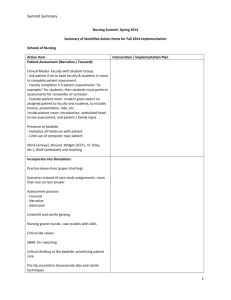Bridging the Gap Between Evidenced Based
advertisement

Formulation of a question Target Audience Literature review Expert opinions Conclusion and recommendation Nurses may not be familiar with effective search strategies Lack of knowledge of what a database is Choosing the correct data base,ie; “we are beyond google” Negative attitudes regarding “research” Fear of practicing differently from their peers Lack of experience with research Time constraints PICO is a method of putting together a search strategy that allows you to take a more evidence based approach to your literature searching when you are searching bibliographic databases. PICO stands for: Patient/Population Who or What? Intervention How? Comparison What is the main alternative? (If appropriate) Outcome What are you trying to accomplish, measure, improve, effect WWW.LIBGUIDES.HSL.WASHINGTON.EDU/CONTENT.PHP Choose key words closely Recent less than ten years Quality of publication- peer reviewed Country it was published in Qualifications of the authors Gold Standard randomized controlled trial Steps to a literature review on the CareGroup Portal Click on: • Clinical Tab • Medical library resources (found on the left) • Databases • Ebsco • Pick at least two – we tend to use CINAHL,Cochrane hit continue • Another that we use is pubmed you may get an abstract and you can ask the hospital librarian to obtain the article if you find it is pertinent (Cherie Haitz ext :5109) Evidence Based practice is the way of the future Questions that you have can evolve into projects that can positively affect your nursing practice or patients Clinical Evidence empowers nurses to provide the best practice You ,as the staff nurse, have the clearest viewpoint on your unit concerns This information provides you with the evidence to communicate and support a change for best practice Keep questioning what is the best practice Begin the research process Your Research Ambassador is: Cygan, H. (2011). Taking Evidence-Based Care to the Bedside. Nursing Spectrum , 14. Kleinpell, R. (2009). Promoting research in clinical practice: strategies for implementing research initiatives. Journal of Trauma Nursing, 114-119. Larking, M., Cierpial, C., Vanderboom, T., Anspach, K., Grealish, K., Ball, S., et al. (2009). Research Ambassadors: Bringing findings to the bedside. Nursing Management , 20-22. WWWLIBGUIDES.HSL.WASHINGTON.EDU/CONTENT.PHP Royle, J. (1998). Promoting research utilization in nursing: the role of the individual, organization, and environment. Retrieved February 9, 2011, from Evidence-Based Nursing: http://ebn.bmj.com/content/1/3/71.extract Adams,Jeannette S.(2010). Utlizing Evidenced-Based Research and Practice to support the Infusion Alliance. Journal of Infusion nursing 32 273-277 Chatburn RRT-NPSFAARC (2009). How to Find the Best Evidence. Respiratory Care 54 1361-1365 Fmakic, M., Vonrueden,K., Rauen,C., Chadwick, J.,(2011). Evidenced-Based Practice Habits: Putting more Sacred Cows Out to Pasture. Critical Care Nurse, vol 31 no 2. 38-61 Grimes, D., Schulz,K., (2005)Clinical Research in Obstertrics and Gynecology: More Tips for Busy Clinicians. Obstertrical and Gynecological Survey.











